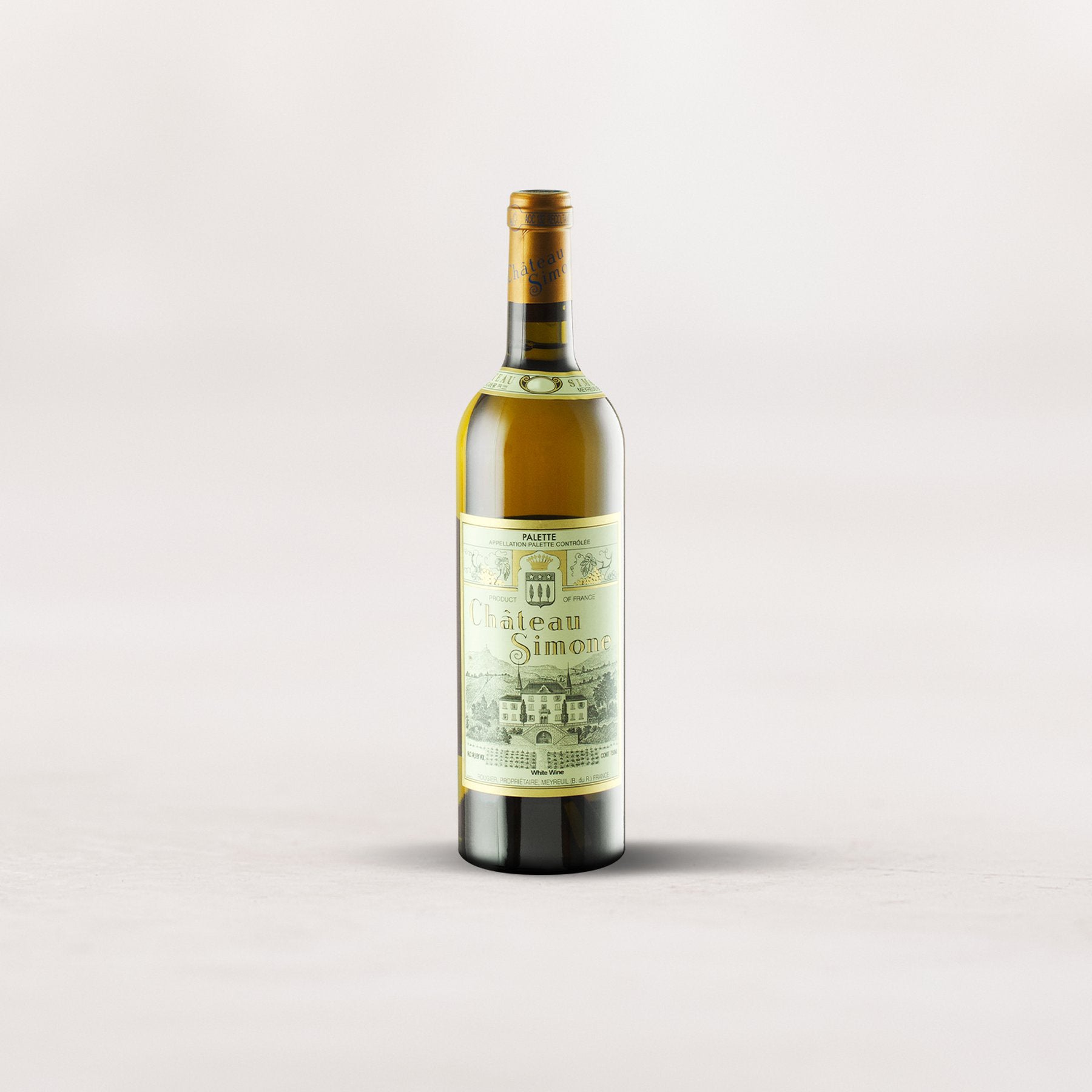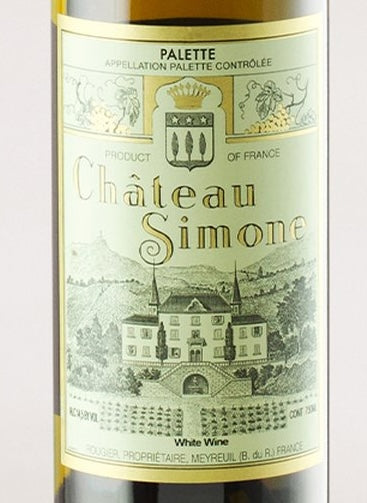Owned by generations of the Rougier family for nearly 200 years, Simone delicately crafts their supernatural Palette Blanc from a sorcerous blend (Clairette, Grenache Blanc, Ugni Blanc, Bourboulenc, Picpoul, Muscat, Sémillon) of ancient raw material and ages it in their hand-dug 16th-century cellar far longer than most. Bottom line, when it comes to Simone’s Palette Blanc, there’s simply no choice but to pile on superlatives, and if you’re striving to own the world’s most enchanting wines, this singular, deeply evocative bottle must be at the very top of your list.
The property clings to a single hillside in Montaiguet, a small hamlet just east of Aix-en-Provence, 20 miles north of Marseille. The appellation that encompasses this village is Palette AOC, and even as a small independent producer, Château Simone produces a majority of the wine labeled within the designation.
Grapes for Simone’s blanc are harvested by hand, de-stemmed, and lightly pressed before fermentation. A native-yeast fermentation lasts for two to three weeks in wooden vats at an unmanipulated temperature. The resulting wine is aged for one year in old foudres, followed by an additional year in mostly neutral oak barrels without any lees stirring. Then, the wine is bottled and aged further. All told, the process takes more than four years before release into the US market.
Why You'll Love It:
- This is a rich, deeply textured, singular white wine that changes like a chameleon over the course of an evening
- Prepare for a kaleidoscopic show: yellow apple, poached pear, salt-preserved lemon, nougat, lees, petrol, crushed stone, honeysuckle, wild herbs, rosin, oak spice, and exotic flowers.
- It’s a contemplative wine—warm, inviting, powerful, broad, poised, unctuous—that leaves a long, savory, wholly unique finish.
-
The character of Château Simone’s wines is perhaps what is most unique and fascinating for sommeliers. At first, it’s quite reserved, showing hints of oxidized yellow apple, lemon verbena, resin, and salt-preserved lemon with smoky richness and waxy green fruits on the palate. On day two, its Burgundian side was out in full force, showing leesy, toasty orchard fruits and citrus on a powerful backbone of crushed limestone.
How To Serve It:
- After a 30-minute decant, serve in bulbous Burgundy stems, around 50-55 degrees
- Let it evolve as long as you can, seeing if you can stretch your final pour into day three!
-
Enjoy your bottles now and over the next 5-8 years.











